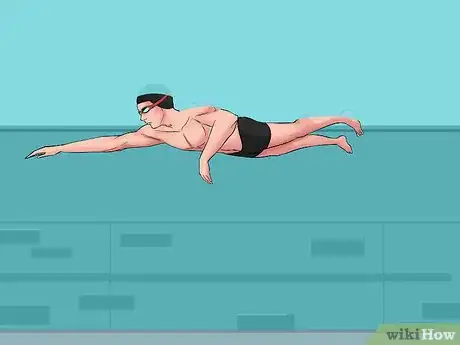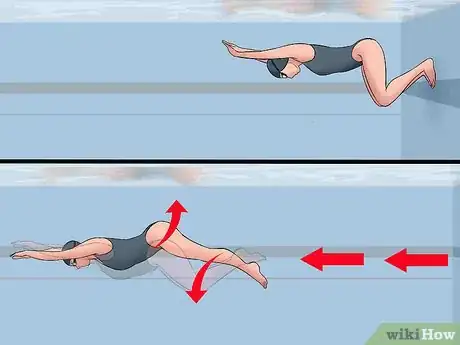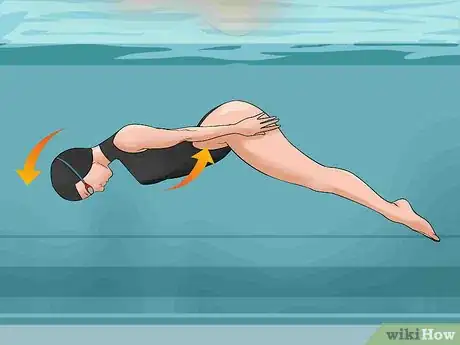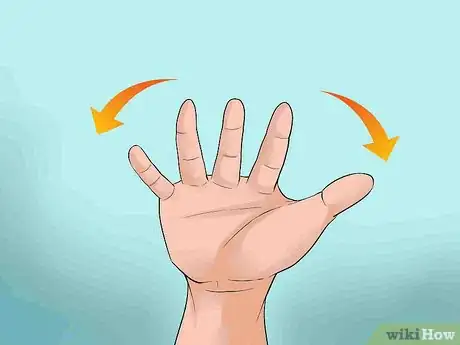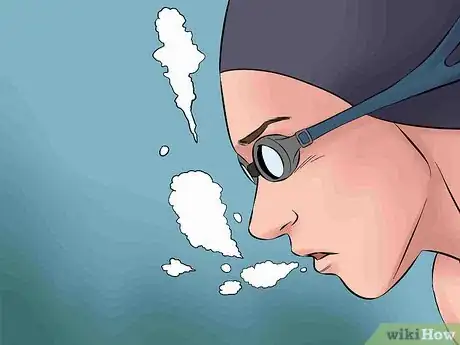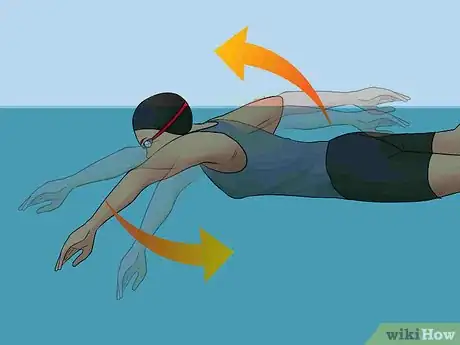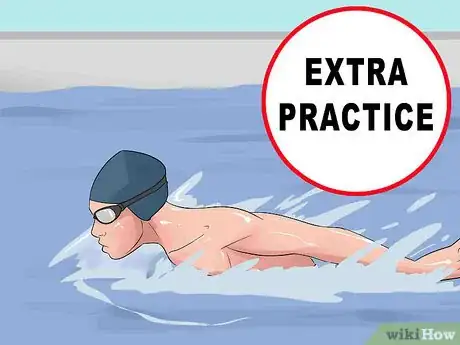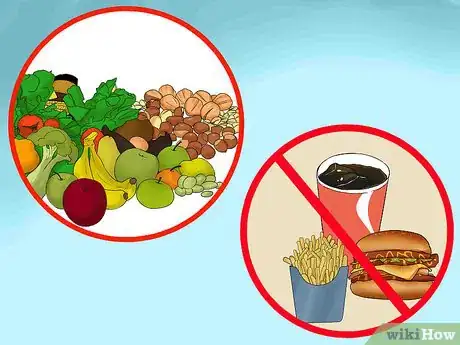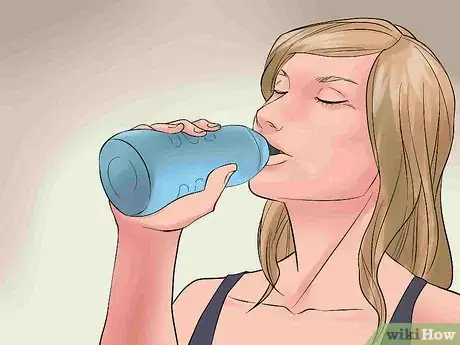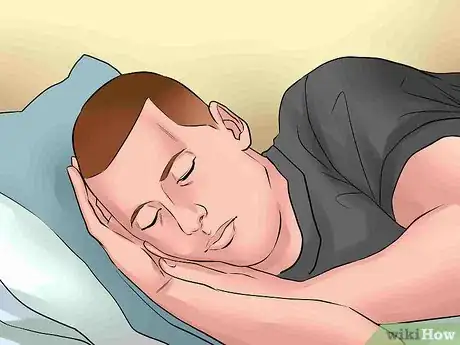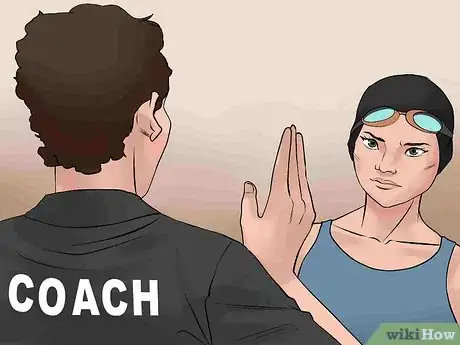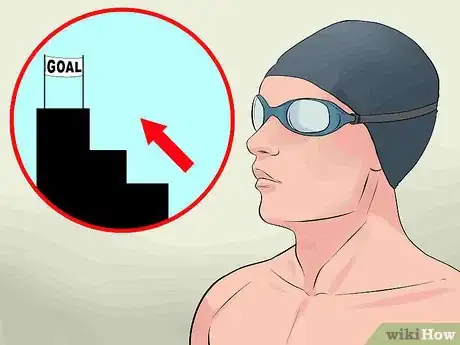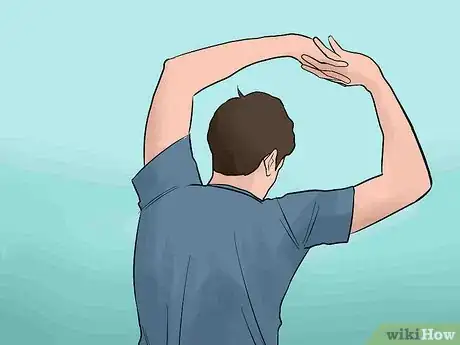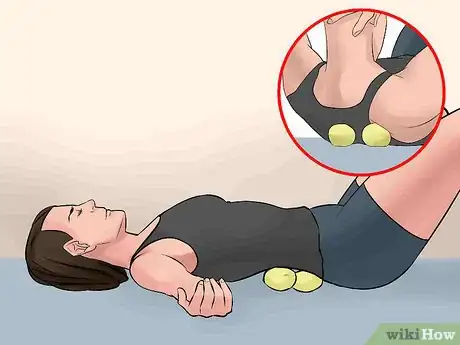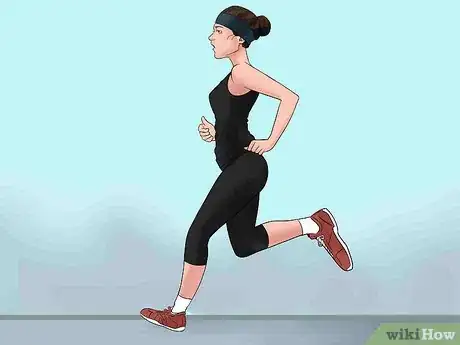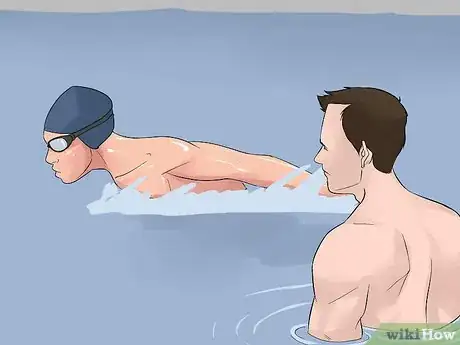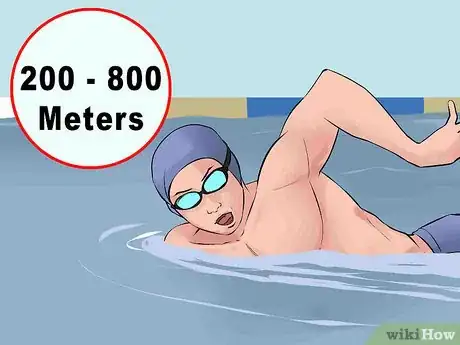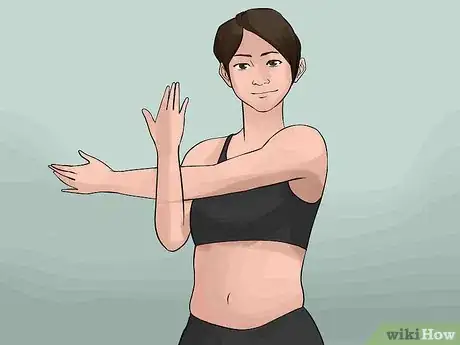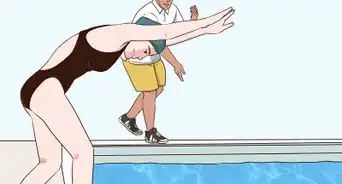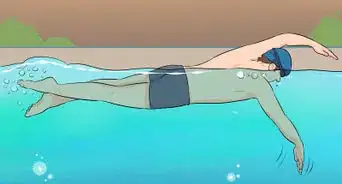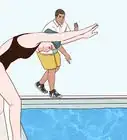This article was co-authored by Francisco Gomez. Francisco Gomez is the Head Coach at the FIT Potato Gym, a training gym established in 2001 in the San Francisco Bay Area. Francisco is a former competitive runner who helps endurance athletes train for major marathons like the Boston Marathon. Francisco specializes in Injury Rehab, Flexibility, Marathon Training, and Senior Fitness. He has a B.S. in Nutrition and Exercise Physiology & Running.
There are 18 references cited in this article, which can be found at the bottom of the page.
This article has been viewed 37,783 times.
If you’re like most competitive swimmers, you almost certainly want to know how to improve your chances of winning races. In swimming competitions, every fraction of a second counts. Even a 0.01 second improvement can make all the difference in the world. Therefore, measures that you can take to improve your speed and endurance, adopt a healthy lifestyle, and train often can improve your odds of success.
Steps
Improving Your Performance
-
1Keep a tight, straight position. The initial racing step of streamlining is an important factor in reducing drag. However, when the muscles get tired, swimmers usually try to skimp on keeping that tight, straight position. Make streamlining a mandatory part of your regular training routine. This way, it will become second nature whether you are training or competing. Regular practice will also allow you to improve your technique for a better shot at first place.
-
2Remember to kick. Whether you’re breaking out or swimming underwater, kicks help to reduce drag. When breaking out, kick forcefully from the wall. This will help you to maintain the speed you gained from the initial push. When you’re underwater, do dolphin kicks by extending your legs straight back, holding your feet together, and moving your legs straight up and down. The longer you can hold the kick, the more velocity you can gain.[1]Advertisement
-
3Hold your head down and your arms at your sides. Your head and arms can reduce the drag on the rest of your body if you know how to position them. When compared to the horizontal alignment of your body, your head should be in a downward position. Keep your arms alongside your body, as opposed to above your head. You can reduce drag significantly by practicing these techniques.[2]
-
4Spread your fingers. Studies show that spreading your fingers just ten degrees can improve your speed by over two percent.[3] To see what a ten-degree spread looks like, hold your right hand up with your palm facing you. Do not stretch your fingers out or squeeze them together. Make sure your pinky is pointing slightly to the left.
-
5Practice bilateral breathing. Professional swimmers argue that bilateral breathing is a key factor in endurance. Breathe on every third stroke, as opposed to the more common breath on every second or fourth. Rather than breathing from the same side of your nose each time, alternate which side you breathe on each time.
-
6Lengthen and vary your strokes. How you move your arms can also affect your endurance. For the complete stroke, reach your arm as far in front of you as you comfortably can. Reach as far behind you as possible in the push phase. Alternating between forward and backward strokes will give certain muscle groups to rest while others work.[4]
-
7Practice some race-ending hacks. You will be tired by the end of the race, but that doesn’t mean you have to fall behind. Focus on muscles you haven't used to the point of exhaustion. Experts suggest kicking more vigorously and working your back and shoulders more. Working the less fatigued muscles will shift your focus away from the muscles that are tired.[5]
Adopting a Healthy Lifestyle
-
1Eat healthy. Swimming can burn thousands of calories in a single practice. Ask your doctor to estimate your caloric burn by your age, weight, and height. After that, you need to replace those spent calories through the proper diet. Important nutrients swimmers need include zinc, protein, calcium, and healthy (monounsaturated) fats. [6] Whether you are an omnivore, vegetarian, or vegan, you can get the recommended daily amount. Most of your diet should consist of fresh, whole foods to avoid having to take too many supplements.
- Nuts (including peanut butter) and beans are excellent sources of healthy fats, zinc, and protein. Dark leafy greens are packed with calcium.
- If you have to eat on the go, pack some granola bars, peanut butter, trail mix, or packable fruit (bananas, citrus, apples, etc.) to stay fueled.
- The day before the competition, stick to small but frequent meals, about every two to four hours.[7]
- Avoid junk foods—anything deep fried, greasy, loaded with sugar, or containing ingredients you can’t pronounce.[8]
-
2Stay hydrated.[9] Believe it or not, you do sweat while swimming.[10] If you don't hydrate before you swim or replace the moisture you lose, you could get dehydrated and experience physical or mental weakness. Regular sips before and after each practice, as well as between intervals, will keep you hydrated. Don't wait until you feel thirsty.
-
3Get enough sleep. Sleep is just as important as physical training for all athletes. Swimmers can improve their sprinting time, reaction time, strokes, and kicks by extending their sleep periods an extra hour or two per night for up to seven weeks before the competition.[11] Go to sleep and wake up at the same times every day—even on weekends and holidays.
- If you feel tired during the day, take a nap, but keep it short. Set your alarm to go off 20 to 30 minutes after your head hits the pillow. Use caution, though. Naps should not replace the eight- to ten hours of sleep you need every night.[12]
Training Efficiently
-
1Talk to your coach. This is especially crucial before you’ve finalized your training plan. Your coach can give you advice about which strokes and events you would do well in. If you are swimming in the meet to get a qualifying time for one of the larger meets, ask your coach what the qualifying times are.
-
2Set goals.[13] Figure out one long-term goal first. Then, set weekly or monthly short-term goals that will make your long-term goal easier to achieve. For example, if your long-term goal is to improve your time by the end of the season, you need to set monthly and weekly goals that will improve your speed and endurance.
-
3Warm up. No matter how pressed you are for time, you should never skip the warm-up. Begin by stretching, working each part of your body in the order your coach recommends. If your muscles are cold, take a short brisk walk or go for a brief swim before you stretch. Continue by power walking, jogging, or swinging your arms to raise your temperature and get your blood flowing.[14]
-
4Work on your flexibility.[15] Whether you’re streamlining or kicking, flexibility can work wonders in improving your speed. Stretching, which conditions your joints to absorb force, is still popular. However, coaches are increasingly recommending mobility drills, which train your joints for improved range of motion.
- Mobility exercises with a tennis ball can make your shoulders more flexible. [16]
- Lie on your back, and place a tennis ball between your spine and rear shoulder bone.
- Place your arm on the floor with your palm facing upward.
- Slowly move your arm across your body to touch the opposite hip.
- Move your arm diagonally so that your hand is overhead.
- Move the tennis ball to the other side of your spine, and repeat with the other arm.
- Training with a monofin can improve flexibility in your ankles. Start out with four to six 25-meter lengths each week. Increase your sets, distance, and time using the monofin as your ankles strengthen. Regular training allows you to track your improvement easily.
- Mobility exercises with a tennis ball can make your shoulders more flexible. [16]
-
5Exercise on dry land. In addition to training in the water, you need to have a regular exercise routine. Aerobic exercises like running will help improve your endurance.[17] Resistance training and calisthenics will keep your core (abdominal and back) muscles strong enough to support the motions of your arms and legs.
-
6Practice with a teammate. Training with a buddy allows you to hold each other accountable for making it to practice, arriving on time, and not leaving early.[18] Choose a teammate who you enjoy spending time with and who enjoys spending time with you. Come to a mutual agreement what days and times you plan to train in the water and on dry land. On the rare occasion when your buddy can’t make it, have a back-up plan ready to keep you motivated.
-
7Slow down to cool down. As your training session ends, slow down your pace. Then, transition to easy strokes and kicks. Swim 200 to 800 meters to prevent lactic acid buildup in the muscles.[19]
-
8End with stretches. Stretching reduces muscle soreness and the risk of injury.[20] Focus on the muscles that get most use during your training. These include:[21]
- Deltoid stretch: Extend your left arm across your chest. Bring the back of your right hand to your left tricep and push back until you feel your left shoulder stretching. Repeat with the right arm.
- Trapezius stretch: Extend your arms straight ahead of you. Turn your palms outward and interlace your fingers.
- Pectoral stretch: Place your hands on the back of your hips, palms down. Try to squeeze your elbows together until you feel your chest muscles stretching.
- Hold each stretch for 30 to 40 seconds.
Expert Q&A
-
QuestionHow should I train to become a faster swimmer?
 Francisco GomezFrancisco Gomez is the Head Coach at the FIT Potato Gym, a training gym established in 2001 in the San Francisco Bay Area. Francisco is a former competitive runner who helps endurance athletes train for major marathons like the Boston Marathon. Francisco specializes in Injury Rehab, Flexibility, Marathon Training, and Senior Fitness. He has a B.S. in Nutrition and Exercise Physiology & Running.
Francisco GomezFrancisco Gomez is the Head Coach at the FIT Potato Gym, a training gym established in 2001 in the San Francisco Bay Area. Francisco is a former competitive runner who helps endurance athletes train for major marathons like the Boston Marathon. Francisco specializes in Injury Rehab, Flexibility, Marathon Training, and Senior Fitness. He has a B.S. in Nutrition and Exercise Physiology & Running.
Fitness Coach Start by heading to the pool 2 or 3 times a week so you can practice. See how long or how far you can swim and set a goal for yourself. Every week, increase your distance or time by 10% to build your endurance.
Start by heading to the pool 2 or 3 times a week so you can practice. See how long or how far you can swim and set a goal for yourself. Every week, increase your distance or time by 10% to build your endurance. -
QuestionHow do I motivate myself to practice swimming?
 Francisco GomezFrancisco Gomez is the Head Coach at the FIT Potato Gym, a training gym established in 2001 in the San Francisco Bay Area. Francisco is a former competitive runner who helps endurance athletes train for major marathons like the Boston Marathon. Francisco specializes in Injury Rehab, Flexibility, Marathon Training, and Senior Fitness. He has a B.S. in Nutrition and Exercise Physiology & Running.
Francisco GomezFrancisco Gomez is the Head Coach at the FIT Potato Gym, a training gym established in 2001 in the San Francisco Bay Area. Francisco is a former competitive runner who helps endurance athletes train for major marathons like the Boston Marathon. Francisco specializes in Injury Rehab, Flexibility, Marathon Training, and Senior Fitness. He has a B.S. in Nutrition and Exercise Physiology & Running.
Fitness Coach Grab yourself a partner! Buddy up with a teammate to practice together. You'll be able to hold each other accountable and will be able to challenge each other in the pool.
Grab yourself a partner! Buddy up with a teammate to practice together. You'll be able to hold each other accountable and will be able to challenge each other in the pool. -
QuestionHow do swimmers prepare for a race?
 Alan FangAlan Fang swam competitively for over 7 years, through high school and into college. He specialized in breaststroke events, and participated in events such as the Speedo Championship Series, the IHSA (Illinois High School Association) state championships, and Illinois Senior and Age Group state championships.
Alan FangAlan Fang swam competitively for over 7 years, through high school and into college. He specialized in breaststroke events, and participated in events such as the Speedo Championship Series, the IHSA (Illinois High School Association) state championships, and Illinois Senior and Age Group state championships.
Former Competitive Swimmer Try reducing your practices as the race approaches. A lot of swimmers do something called a Taper. About 1-2 weeks before a big meet, you'll reduce your overall yardage and focus more on short term sprinting and really fast speed. That small window of time allows your muscles to rest, and it kind of puts you at your optimal point. But, it's important to know that Taper works differently for everyone.
Try reducing your practices as the race approaches. A lot of swimmers do something called a Taper. About 1-2 weeks before a big meet, you'll reduce your overall yardage and focus more on short term sprinting and really fast speed. That small window of time allows your muscles to rest, and it kind of puts you at your optimal point. But, it's important to know that Taper works differently for everyone.
References
- ↑ http://www.npr.org/templates/story/story.php?storyId=93575235
- ↑ https://www.ncbi.nlm.nih.gov/pmc/articles/PMC4723180/
- ↑ http://www.sciencemag.org/news/2016/11/want-swim-fast-spread-your-fingers
- ↑ http://www.telegraph.co.uk/lifestyle/wellbeing/diet/7051945/How-can-I-improve-my-stamina-when-I-am-swimming.html
- ↑ http://coachsci.sdsu.edu/swim/bullets/skills5.htm
- ↑ https://cehsp.d.umn.edu/sites/cehsp.d.umn.edu/files/nutritionalneedsofcompetitiveswimmers.pdf
- ↑ http://www.swimming.org/masters/what-to-eat-during-swimming-competitions/
- ↑ http://hubbardswim.com/docs/RecTeam/Nutrition_for_Swimmers.pdf
- ↑ Francisco Gomez. Fitness Coach. Expert Interview. 24 October 2019.
- ↑ http://www.triathlete.com/2016/01/nutrition/the-importance-of-staying-hydrated-during-swim-training_16462
- ↑ https://www.sciencedaily.com/releases/2008/06/080609071106.htm
- ↑ https://www.universityofcalifornia.edu/news/how-sleep-pro-athlete
- ↑ Francisco Gomez. Fitness Coach. Expert Interview. 24 October 2019.
- ↑ http://www.swimming.org/justswim/guide-stretching-warming/
- ↑ Francisco Gomez. Fitness Coach. Expert Interview. 24 October 2019.
- ↑ http://www.usms.org/articles/articledisplay.php?aid=3186
- ↑ http://www.active.com/swimming/articles/2-workouts-to-improve-swimming-strength-and-endurance
- ↑ Francisco Gomez. Fitness Coach. Expert Interview. 24 October 2019.
- ↑ http://www.swimming.org/masters/optimise-swimming-recovery-hard-workout/
- ↑ https://www.ncbi.nlm.nih.gov/pmc/articles/PMC1250267/
- ↑ http://www.swimming.org/masters/stretching-muscles-swimming/
